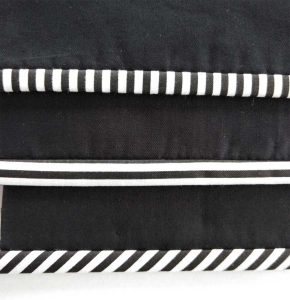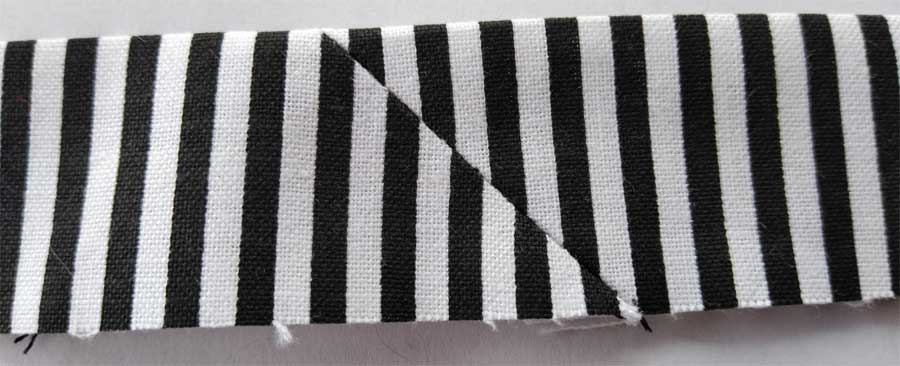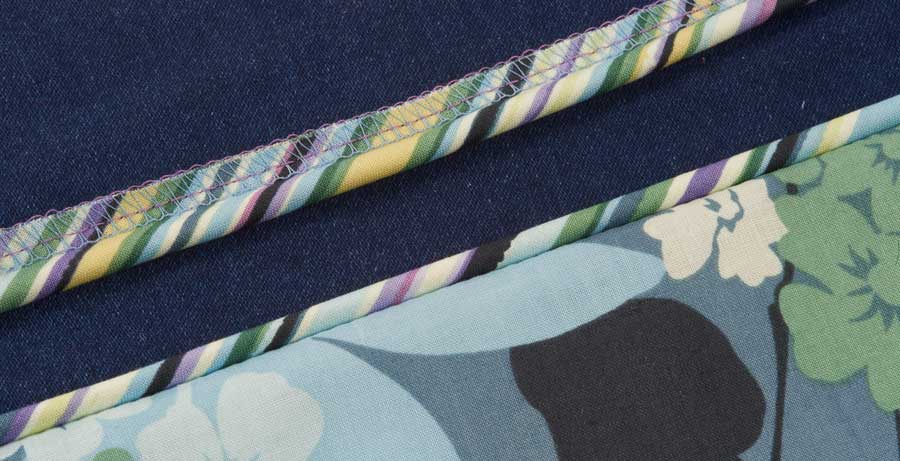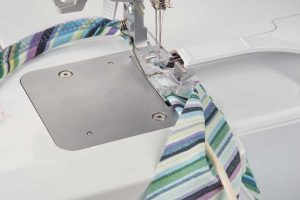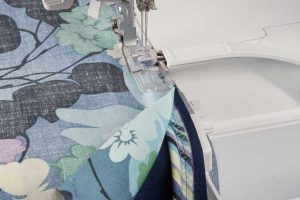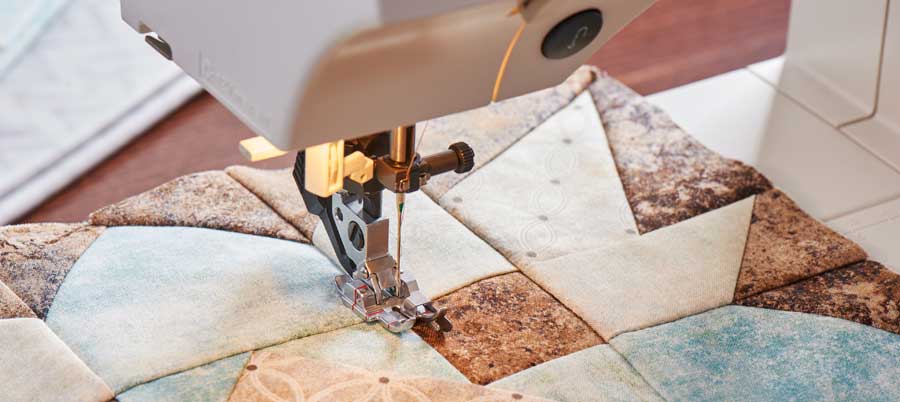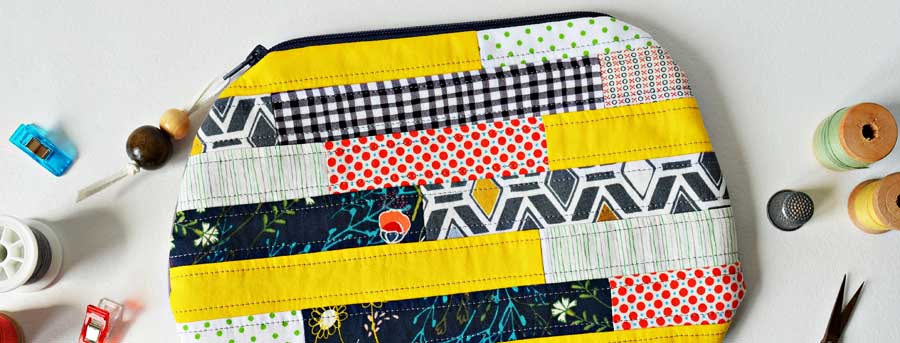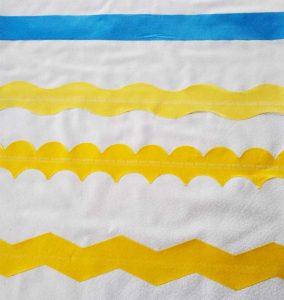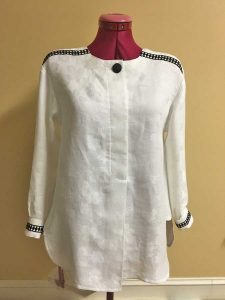 After months of working 12-hour shifts in the Covid side of the the emergency room of Jefferson Hospital in Philadelphia, nurse and ASG member Kendra Mochel said, “Thank goodness I had my sewing to come home to. It helped me de-stress and get away from all the illness I was seeing every day.”
After months of working 12-hour shifts in the Covid side of the the emergency room of Jefferson Hospital in Philadelphia, nurse and ASG member Kendra Mochel said, “Thank goodness I had my sewing to come home to. It helped me de-stress and get away from all the illness I was seeing every day.”
And what has she been working on? Kendra said, “This year’s chapter challenge for our annual meeting was to reuse or repurpose something. I combined this challenge with the theme for the conference fashion show of ‘Who Are You Wearing?’ and decided to make a shirt I could use for both.”
The Pattern
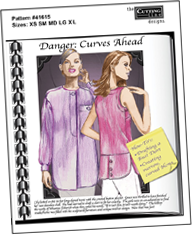 Kendra started with the Danger: Curves Ahead Tunic from Cutting Line Designs by Louise Cutting. The pattern contains a long sleeve blouse and a sleeveless top which she had made before. For the repurpose aspect, she used an old damask tablecloth for the fabric. She says, “It was soft, draped beautifully, and I love the white on white design. However, it was a bear to work with, although it did help to starch the fabric like crazy. Luckily, I had one large and two small cloth covered buttons left from another outfit that I could use for this. And I also shopped my stash for lace that helped to balance the shirt.”
Kendra started with the Danger: Curves Ahead Tunic from Cutting Line Designs by Louise Cutting. The pattern contains a long sleeve blouse and a sleeveless top which she had made before. For the repurpose aspect, she used an old damask tablecloth for the fabric. She says, “It was soft, draped beautifully, and I love the white on white design. However, it was a bear to work with, although it did help to starch the fabric like crazy. Luckily, I had one large and two small cloth covered buttons left from another outfit that I could use for this. And I also shopped my stash for lace that helped to balance the shirt.”
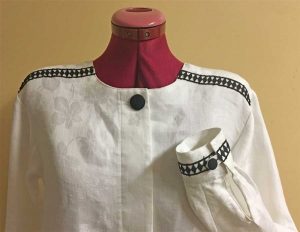 The pattern comes in sizes XS to XL. Kendra said she used the extra small for the bust size and medium for the hip area. “I did not want the pleats on the sleeve head, so I altered the pattern for a smoother look. The original pattern had a longer shirt length, but I shortened it by about three inches and added a gusset on the hips because I could not get the shirt to drape straight. I need to stop fooling myself about size,” she added. “Next time I will be using the next sizes up. I have a small wrist, but the cuff was still too small so I had to change the closure to a loop instead of a button hole.”
The pattern comes in sizes XS to XL. Kendra said she used the extra small for the bust size and medium for the hip area. “I did not want the pleats on the sleeve head, so I altered the pattern for a smoother look. The original pattern had a longer shirt length, but I shortened it by about three inches and added a gusset on the hips because I could not get the shirt to drape straight. I need to stop fooling myself about size,” she added. “Next time I will be using the next sizes up. I have a small wrist, but the cuff was still too small so I had to change the closure to a loop instead of a button hole.”
Design Details
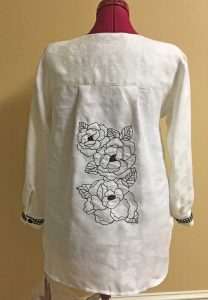 Lately Kendra has taken to “slow” sewing, and she said this outfit certainly fit the bill. She embroidered the back of the tunic with a design that was built into her new Brother Dream Machine 2. While she said the instructions with the pattern were complete and clear, she found herself making several mistakes along the way. This may be due to her stress level from work. She admits to having to embroider the back twice because of using the wrong stabilizer the first time, as well as a mishap with her iron. Then she sewed the sleeve on inside out because she couldn’t determine the right side of the fabric. The lace was sewn on by hand, and she said this was definitely worth the effort because it adds the perfect finishing detail.
Lately Kendra has taken to “slow” sewing, and she said this outfit certainly fit the bill. She embroidered the back of the tunic with a design that was built into her new Brother Dream Machine 2. While she said the instructions with the pattern were complete and clear, she found herself making several mistakes along the way. This may be due to her stress level from work. She admits to having to embroider the back twice because of using the wrong stabilizer the first time, as well as a mishap with her iron. Then she sewed the sleeve on inside out because she couldn’t determine the right side of the fabric. The lace was sewn on by hand, and she said this was definitely worth the effort because it adds the perfect finishing detail.
“The shirt was a lesson in patience, but I am glad I finally finished it.” With much determination she added, “At one point I thought this blouse did not want to be made. However, I will not be out done by an inanimate object. I look forward to wearing it with a pair of black pants and heels.”
~Kendra Mochel, ASG Member





